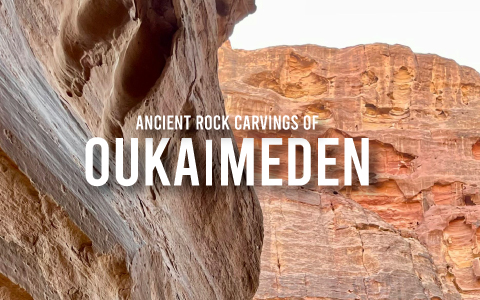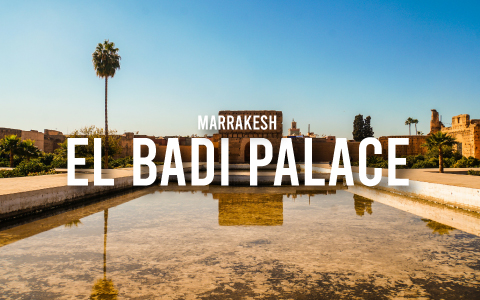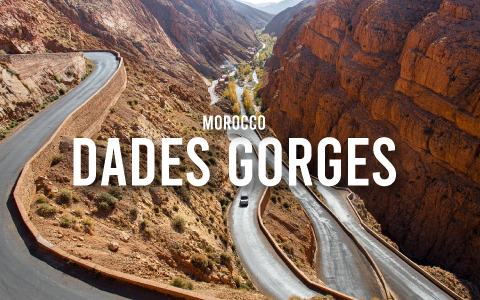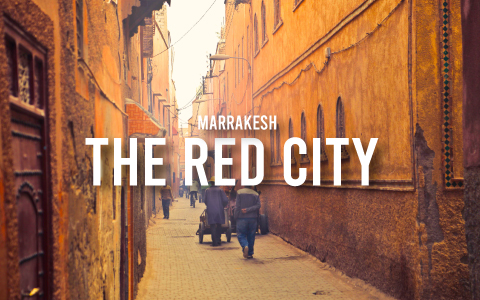
The Ancient Rock Carvings of Oukaïmeden, Morocco’s Hidden Treasure
Iin the High Atlas Mountains, approximately 75 kilometers south of Marrakesh, lies the breathtaking Oukaïmeden Valley. Known primarily as a popular winter sports destination, Oukaïmeden harbors a less well-known but equally captivating treasure: ancient rock carvings that offer a glimpse into Morocco’s distant past. These petroglyphs, etched into the region’s rocky landscape, stand as a testament to the area’s prehistoric inhabitants and their way of life.
Unveiling the Petroglyphs
The rock carvings of Oukaïmeden are ancient images that have been chiseled into the stone surfaces of the mountains. These carvings date back to the Neolithic period, approximately 5,000 years ago, and continue into the Bronze Age. That period was a time of significant cultural and technological development. Communities transitioned from a nomadic, hunter-gatherer lifestyle to more settled agricultural practices. This shift is reflected in the carvings, which often depict scenes of animals and agricultural activities,including human figures, animals, and abstract symbols. The images vary in size and detail, with some being simple engravings while others are more intricate and elaborate. The most common motifs include representations of animals such as antelopes, cattle, and horses, as well as human figures engaged in various activities, such as hunting and dancing.
A Journey Through Time
Archaeologists believe that the petroglyphs served multiple purposes. They may have been used as markers for territorial boundaries or hunting grounds, as well as for ceremonial and ritualistic purposes. The presence of animal motifs suggests a deep connection between the prehistoric inhabitants and the natural world, indicating the importance of wildlife in their daily lives and spiritual practices.
Over the centuries, the significance of these carvings evolved. As different cultures and civilizations passed through the region, the petroglyphs were interpreted and reinterpreted, adding layers of meaning to the already rich tapestry of history embedded in the rock. Today, they stand as silent witnesses to the passage of time, offering a window into the lives of those who walked these mountains thousands of years ago.
Why Visit Oukaïmeden’s Petroglyphs?
The rock carvings of Oukaïmeden are worth a visit for several compelling reasons.
First and foremost, they offer a unique glimpse into the prehistoric past of Morocco, providing tangible evidence of the region’s ancient inhabitants and their way of life. The carvings are not only artistically impressive but also rich in historical and cultural significance, making them a must-see for anyone interested in archaeology and anthropology.
Furthermore, the setting of Oukaïmeden itself is breathtaking. The landscape of the valley includes towering peaks, lush alpine meadows, and clear mountain streams, creating a serene and picturesque environment. Whether you are a history enthusiast, a nature lover, or simply seeking a peaceful retreat from the hustle and bustle of city life, Oukaïmeden has something to offer.
Visiting the petroglyphs also provides an opportunity to connect with the local Berber culture. The Berbers, or Amazigh people, have inhabited the High Atlas Mountains for millennia and continue to maintain their traditional way of life. Interacting with the local communities and learning about their customs, music, and cuisine adds an enriching dimension to the visit.
How to Visit Oukaïmeden
The petroglyphs are spread across several sites within the Oukaïmeden Valley, with some of the most notable clusters located near the mountain pass at an altitude of around 2,600 meters. Some are just near the main ski resort.
To visit the carvings, you must first make your way to Marrakesh, Morocco’s vibrant cultural capital. From Marrakesh, the journey to Oukaïmeden takes approximately two hours by car. The route winds through picturesque landscapes, offering stunning views of the High Atlas Mountains. The road is generally in good condition, but it is advisable to use a four-wheel-drive vehicle, especially during the winter months when snow can make the roads more challenging to navigate.
Once in Oukaïmeden, you can explore the petroglyphs on foot. Local guides are available and highly recommended, since they often come from the nearby Berber communities and possess a deep knowledge of the region’s cultural heritage.
If you are not into adventure, you can choose an organized tours that include transportation from Marrakesh, guided hikes to the petroglyph sites, and opportunities to learn about the local flora and fauna. These tours are an excellent way to experience the natural beauty of the High Atlas Mountains while gaining a deeper understanding of the ancient rock carvings.
Other Attractions Near Oukaïmeden
While the ancient rock carvings are undoubtedly the highlight of a trip to Oukaïmeden, the surrounding region offers several other attractions that are well worth exploring.
- Toubkal National Park: Located nearby, Toubkal National Park is home to Jebel Toubkal, the highest peak in North Africa. The park offers numerous hiking trails, ranging from easy walks to challenging climbs, and is a haven for outdoor enthusiasts. The ascent to the summit of Jebel Toubkal is a popular trek that rewards climbers with stunning panoramic views.
- Ourika Valley: Just a short drive from Oukaïmeden, the Ourika Valley shows beautiful landscapes, traditional Berber villages, and vibrant markets. The valley is also home to Setti Fatma, where visitors can hike to a series of waterfalls and enjoy the refreshing mountain air.
- Marrakesh: No visit to the region would be complete without spending time in Marrakesh. This bustling city is a feast for the senses, with its vibrant souks, historic palaces, and beautiful gardens. The UNESCO-listed Medina is a maze of narrow streets with shops, cafes, and artisans, offering endless opportunities for exploration and discovery.
- Ait Benhaddou: A bit further afield but worth the journey, Ait Benhaddou is a fortified village and UNESCO World Heritage site. This ancient ksar has been featured in numerous films and television series and is a stunning example of traditional Moroccan earthen architecture.



